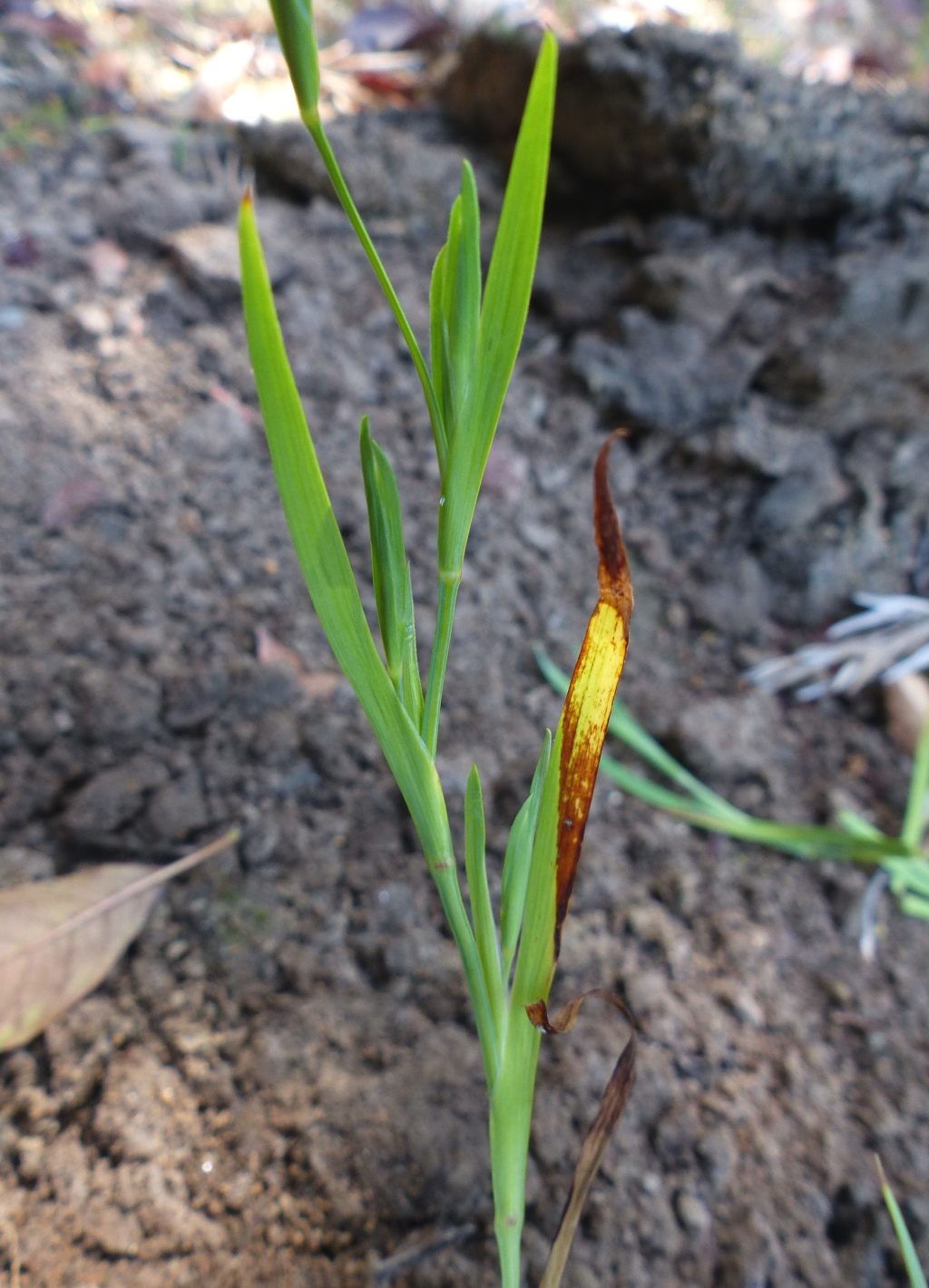Sisyrinchium
Annual or perennial herbs, tufted or rhizomatous herbs. Stems and branches flattened, rarely terete. Leaves basal and cauline, equitant, linear. Inflorescence of 1–several clusters of flowers, each cluster with 2–6 pedicellate flowers emerging successively from paired leaf-like primary bracts; secondary bracts concealed by the primary bracts. Flowers actinomorphic, soon withering; perianth lobes almost free, equally long, but outer perianth lobes often slightly wider than inner perianth, basally forming a 'tube' around stamens and style, distally spreading, often glandular-pilose on outer surface; stamens included, filaments usually united, anthers dorsifixed; ovary rounded, glabrous or glandular-pilose; style deeply 3-branched, branches entire and filiform, stigmas terminal, minute. Capsule globose to trigonous; seeds many, surface pitted, with aril absent.
More than 100 species in North and South America; 2 species naturalised in temperate Australia and Victoria as weeds of pasture and disturbed areas.
Conn, B.J. (1994). Iridaceae. In: Walsh, N.G.; Entwisle, T.J., Flora of Victoria Vol. 2, Ferns and Allied Plants, Conifers and Monocotyledons, pp. 686–716. Inkata Press, Melbourne.
 Spinning
Spinning



